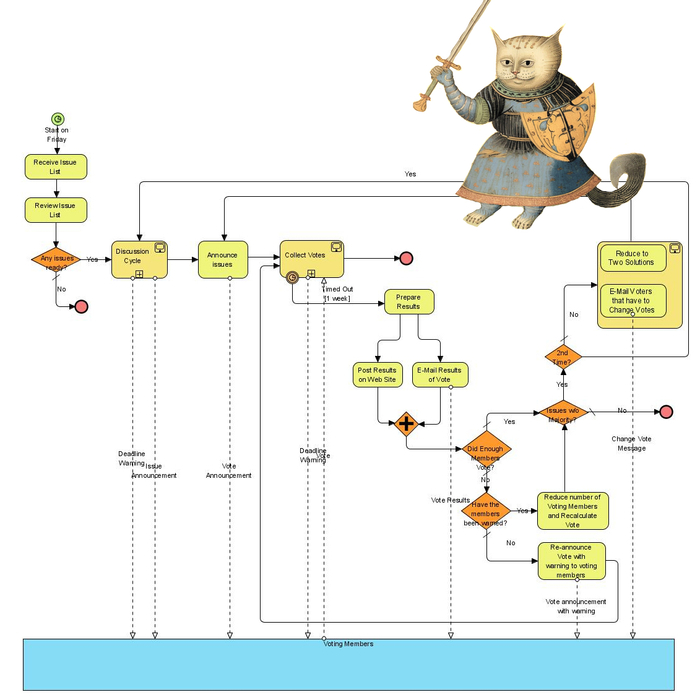The Supremely Boring World Of Visual Programming & Diagramming Tools
Wednesday • December 20th 2023 • 11:33:04 pm
When you model a process, and there is a step that needs human intervention.
Lets say, appointment scheduling, traditionally done by calling the person up.
If all you have to do, is drop a little icon on the canvas to make it work, than that is scary.
Because now you are not just programming software, you are also programming with humans in the loop.
The way this would work, is via a kind of an inbox or a TODO app, the person that normally does all the phone stuff.
Simply gets a another TODO item, they don't care that it comes from an icon in your app.
They just negotiate based on instructions, and mark the task as done or error.
And your program can take it from there, you route the response to the next steps.
The icon in your development environment, is expressed by an inbox, on the company side.
You drag and drop a program together, hit start, and stuff gets done - that is scary.
Outside of a company, this is known as the mechanical turk.
A component that is puggable, but on the inside uses the human mind.
And yes, in the age of AI, some icons can be downgraded to a Weak AI as we have today.
Programs may often still work, though may produce a higher error rate.
A more recognizable example, here, is the self checkout.
An AI, could try to problem solve, on the checkout screen, but if a failure the checkout person will be called for help.
This is undeniably powerful, and crazy things can happen here.
For example, one of the people checking out, can be offered a $5 discount.
For assisting a customer, when the checkouts are overwhelmed.
These things are too confusing to program, without a visual programming language.
With a visual programming language however, switching the program to AI, or checkout specialist, or a customer even.
Can be as simple as making a connection between two boxes, or as safe, as setting up an IF condition that relies on a switch....
Or some numeric value, such as "businessLevel".
Visual Programming & Diagramming Tools, don't just create programs, but also create a user interface for the business process.
On a more down to earth scale, where a visual programming language, simply manages some application.
A new user interface or logic, can be replaced or introduced with a drag and drop.
Something that would be impossible and buggy, in conventional programming.
Visual reprogramming separates concern, in a more logical way.
So logical that even the program operator, could successfully make changes to adapt to some new condition.
In the age of capable AI assistants, these changes can be suggested, and somewhat smartly reasoned about by machines.
The example of that would be creating a parking lot based queue system, during a pandemic.
Moving the checkout user interface to customer smartphones, adapting who puts items in the cart, and how the cart content make their way into the car's trunk.
Again, a visual Programming Language, is both the System Design Interface and System Management interface.
Often all that changes between different business types, is a small set of components.
The same is true for Software Applications, the difference between video editing and graphic design, or even web design, is not that great.
Perhaps as little as 10 or 20 components, such as canvas, toolbox, workspace, and project management.
